Take a seat my children and open your ears to to the Persian epic, Shahnameh. It is here we find the Persian prince, Siyavush. He is accused by his wicked step mother, the Queen of Iran, of lusting after her, and to prove his innocence, Siyavush is forced to undergo a trial by fire.
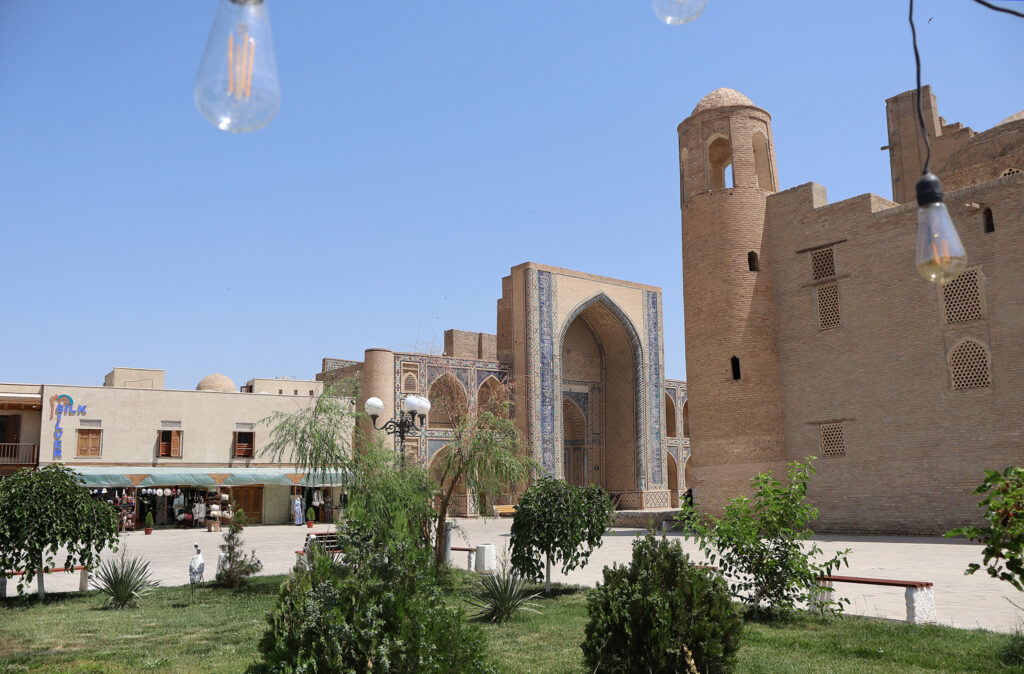
He was unscathed by the column of fire, but despite his unburnt innocence his fathers love grew cold, and Siyavush exiled himself to cross the Amu Darya river into the mythical land of Turan. And it was here King Afrosiab accepted Siyavush into his court in Samarkand. Soon enough, he wed the princess Farangis, her dowry being the vassal state of Bukhara. And so it was here that Siyavush built the city of Bukhara
Unfortunately for Siyavush, he created a lot of enemies in the court – especially considering that Siyavush’s father was the Shah of Iran, their sworn enemy – and so King Afrosiab believed the accusations of plotting to overthrow this rulership, and swiftly removed the head of Siyavush. As his blood filled the earth, a plant grew on the spot, later to be named “Khune Asyavushan,” or the “blood of Siyavush.
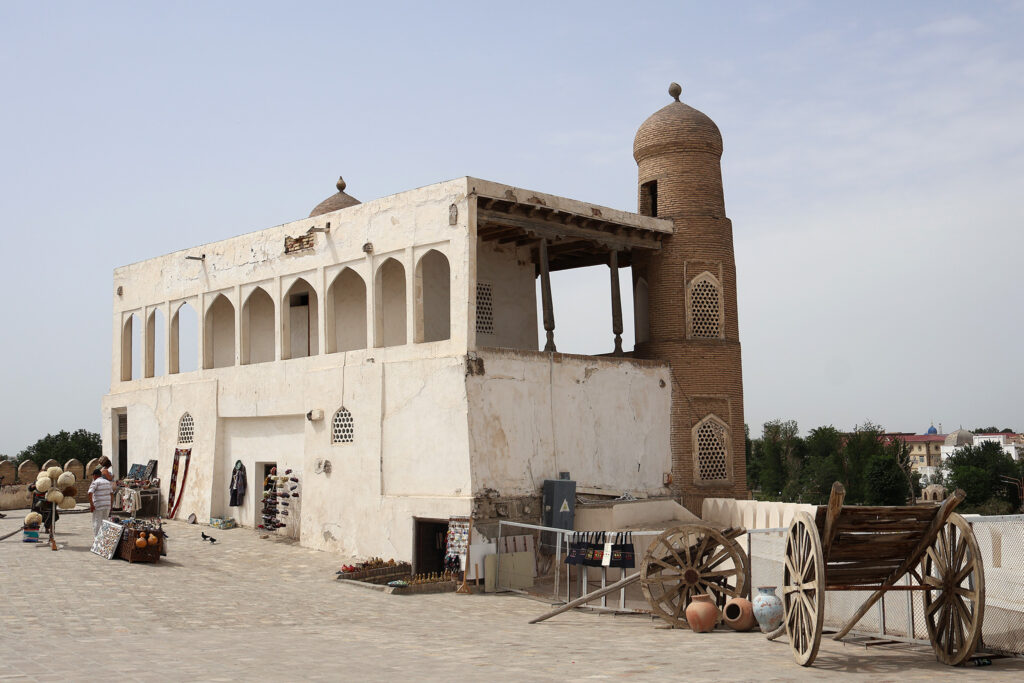
Founding myths aside, Bukhara is situated in the perfect location for Silk Road trade. Such a prime trading spot would attract both wealth and unwanted attention. The city saw itself sacked by the Achaemenids in the 6th century BCE, then Alexander in 329BCE, and a pile on of invaders under the various names of the Seleucids, Bactrians, and the Kushans.
The Arab invasion arrived in the 7th century under Qutaiba ibn Muslim, turning Bukhara a primary centre of religious worship of the Persian Godess Anahita, allowing Christians worshippers along side, into an Islamic centre virtually overnight, violently quashing the previous religions.
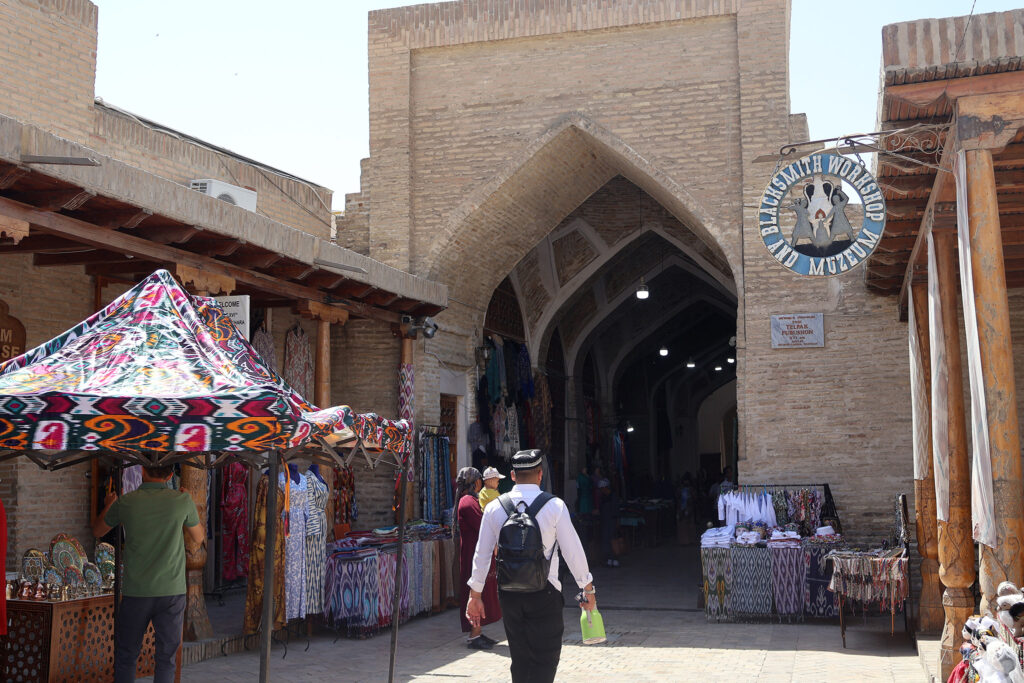
The 9th and 10th centuries saw Bukhara shine in a glorious golden age. Trade on the Silk Road thrived; artists, poets, and scientists patronised the city. But all goods things come to an end, and along came a Genghis Khan to ruin everything. Murdering and enslaving the population, Genghis razed the main mosque and declared himself the “Scourge of God”.
500 years later, Bukhara would be revived from rubble, dust, and the haunted dead. It would be Uzbek tribes establishing a khanate here, and the rebuilding of the city began, resurrecting it as a regional religious centre again. The Soviets of course had their time here, but we now have the Bukhara of today, a slice of Persia in Uzbekistan, and thankfully the Soviets didn’t screw that up.
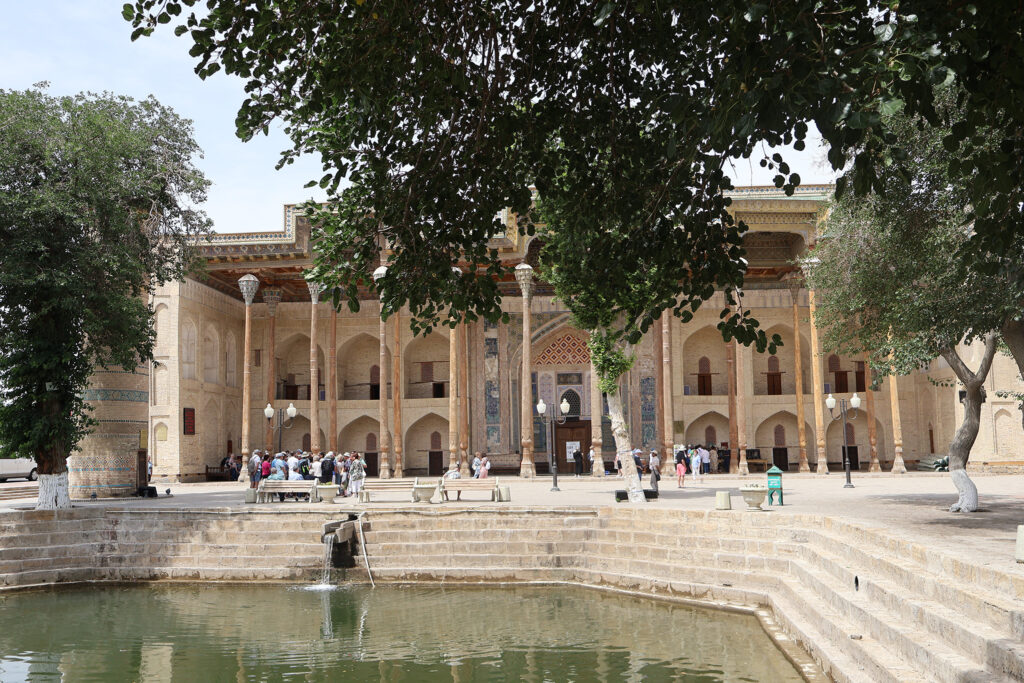
The train station in Bukhara isn’t actually in Bukhara, but the city next to it. This allows for the taxi drivers outside to use all the excuses to over charge their fare. I just went with it, knowing I was paying more than I should, but it’s still so much cheaper than a taxi back home, and I just want to get to the hotel. And this right here, this is why they over charge!
I was staying in the centre of the old town, and with the afternoon still free to wander, I headed off down the road to Lyabi Hauz Square. The first notable observation was it’s a good 35 degree heat outside. This by far the hottest temperature on this trip, and it lasted for a solid two days before the temperature dropped down to 25.
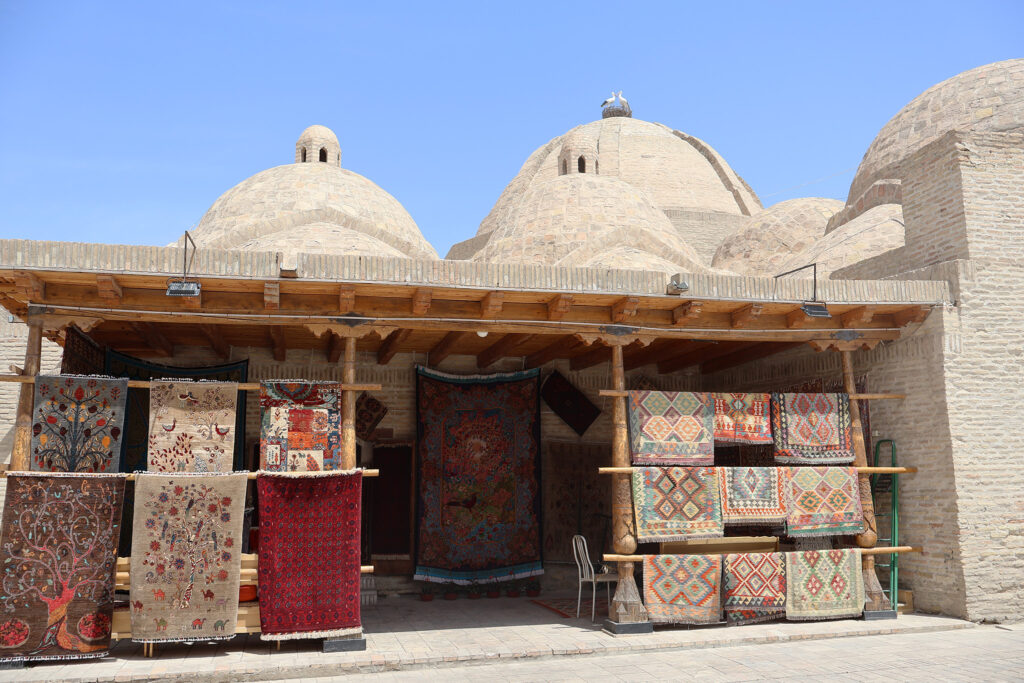
The main Lyabi Square was packed. There’s seriously market stalls after market stall, with people everywhere, including the restaurants surrounding an artificial reservoir (the hauz) at the centre, which was built around 1620, and surrounded by mulberry trees that are dated 150 years prior. It was a Sunday today, and I had to wonder if this many people would still be in the square the next day.
The answer to that was gradually the crowds would disperse. The next day the tourist bus people were still out and about, at the Kalyon Minar (Great Minaret), sitting in the shade of the mosque, were a good hundred people avoiding the afternoon sun’s heat rays.
In fact, these tourists might have to thank Genghis Khan for the minaret still standing to this day. The Kalyon Minar was built in 1127, with a rather special mortar mixed with bulls blood, camel milk, and eggs. And two years to set. This must have been some magical mortar, as the minaret is considered the tallest free standing tower in the world. And Genghis, so impressed by it, spared the minaret while razing the rest of the city. This mortar mix should be used in modern buildings, they were clearly onto something.
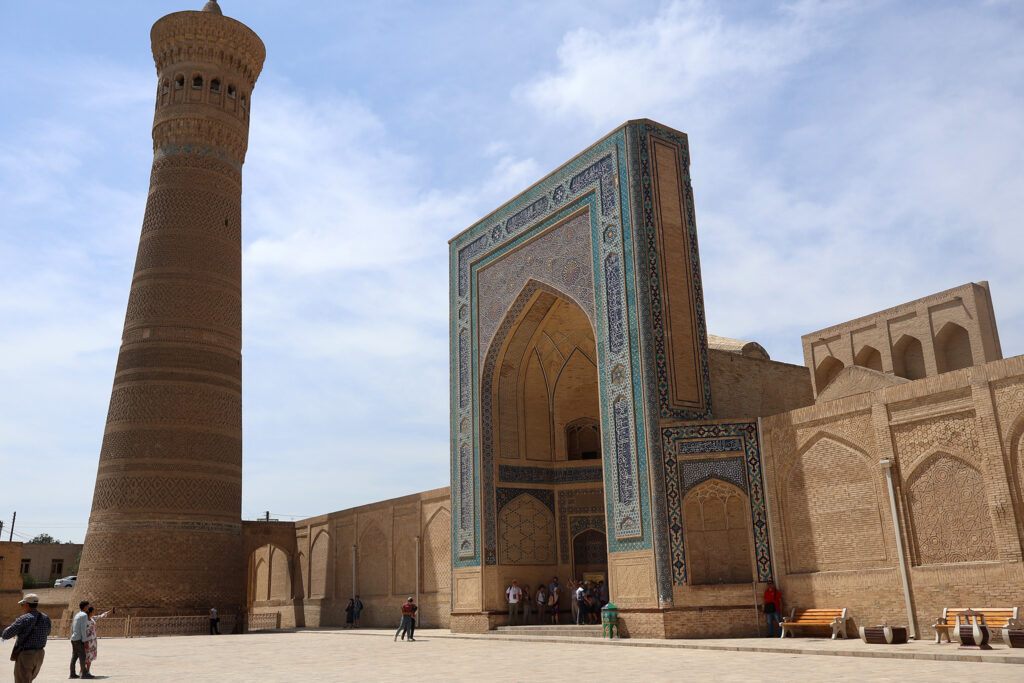
With the heat, some of the restaurants have those mist sprays over head. It’s so very, very, welcome in 35 degrees. I was so glad this was a thing here, and at one location their chicken kebab and rosemary potatoes, plus cold beer, made the day a happy place. Except for one thing – this stupid cat kept harassing me, and only me, everyone else it ignored. They do say cats ignore the people who like cats, and gravitate to those that dislike them. Still, I found another plus here as I was able to guess the wifi password for internet access (the password was 12345678).
The biggest tourist attraction in Bukhara is The Ark, a huge walled fortress containing the royal court and basically a mini town. The Ark is thought to have been constructed between 5th and 6th centuries as a Zoroastrian fire temple and administration centre, but now only a small part of the fortress is explorable, and what there is are just jammed with souvenir shops. Honestly, it’s all fairly disappointing and I’m not sure I’d even recommend anyone bother paying the entry fee, just take a photo of the outside as it’s the only interesting sight here.
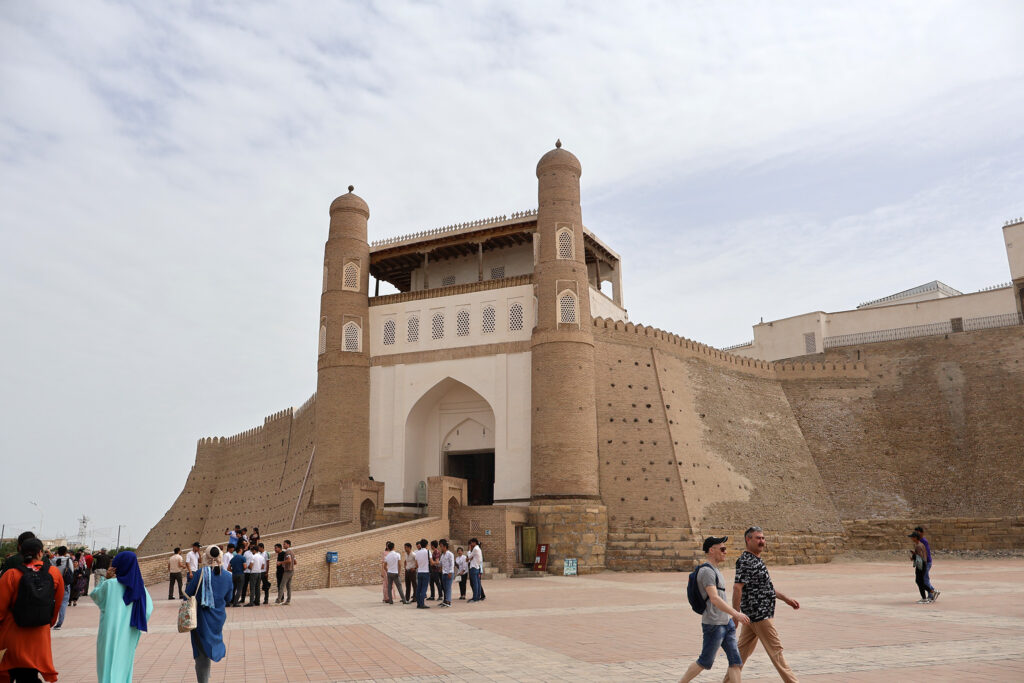
The family running the hotel are really nice, the matriarch running a tight ship as I can attest hearing her yelling in the foyer (I think she was angry, it’s hard to tell). There was one morning I thought I missed breakfast on the roof terrace, and went back to my room, only for 5mins later a knock at the door by her daughter telling me to go back upstairs as mum had made breakfast. Can’t say no to surrogate mum!
There was one cafe I stopped at every morning, a place called Wishbone Cafe. This immediately become my morning coffee provider, situated in a nice cooled domed building. The espresso’s are pretty good, and certainly better than the instant coffee served everywhere. The sound of the coffee grinder was like sleigh bells at Christmas.
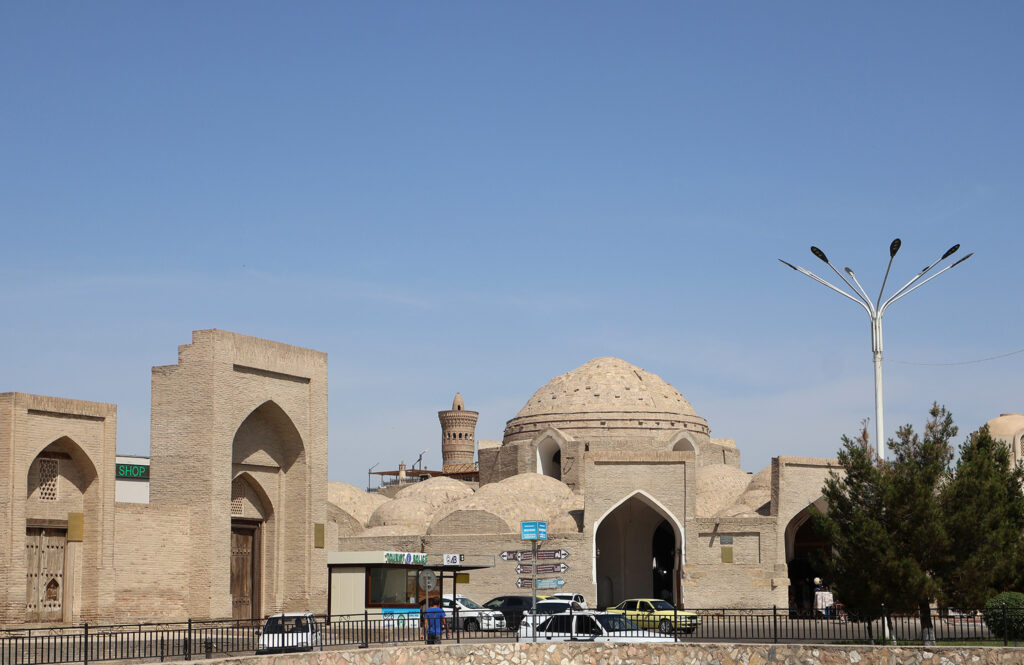
The look and feel of Bukhara is significantly different from the rest of Uzbekistan I’ve been to so far. Mercifully there’s no Soviet style Brutalist architecture, instead the old city is filled with mud brick structures with domed roofs, archways, and inviting entrances filled with rugs and trinkets. I couldn’t help but be reminded of Tatooine in Star Wars, the set design so clearly being inspired by this old Persian and Arab style architecture.
After visiting a few other sights, including the old prison (complete with “Bug Pit” for prisoners the guards didn’t like), and taste testing some more restaurants, I needed to figure out how to get to my next stop; the city of Khiva in the south west, toward the Turkmenistan border. It’s a long way, and the only train that goes there leaves Bukhara at 4:30am and takes 7 hours. It’s not an hour of the day I consider real, and I looked for other routes there.
The alternatives were just two – a domestic flight or private 5 hour taxi. Decisions, decisions…
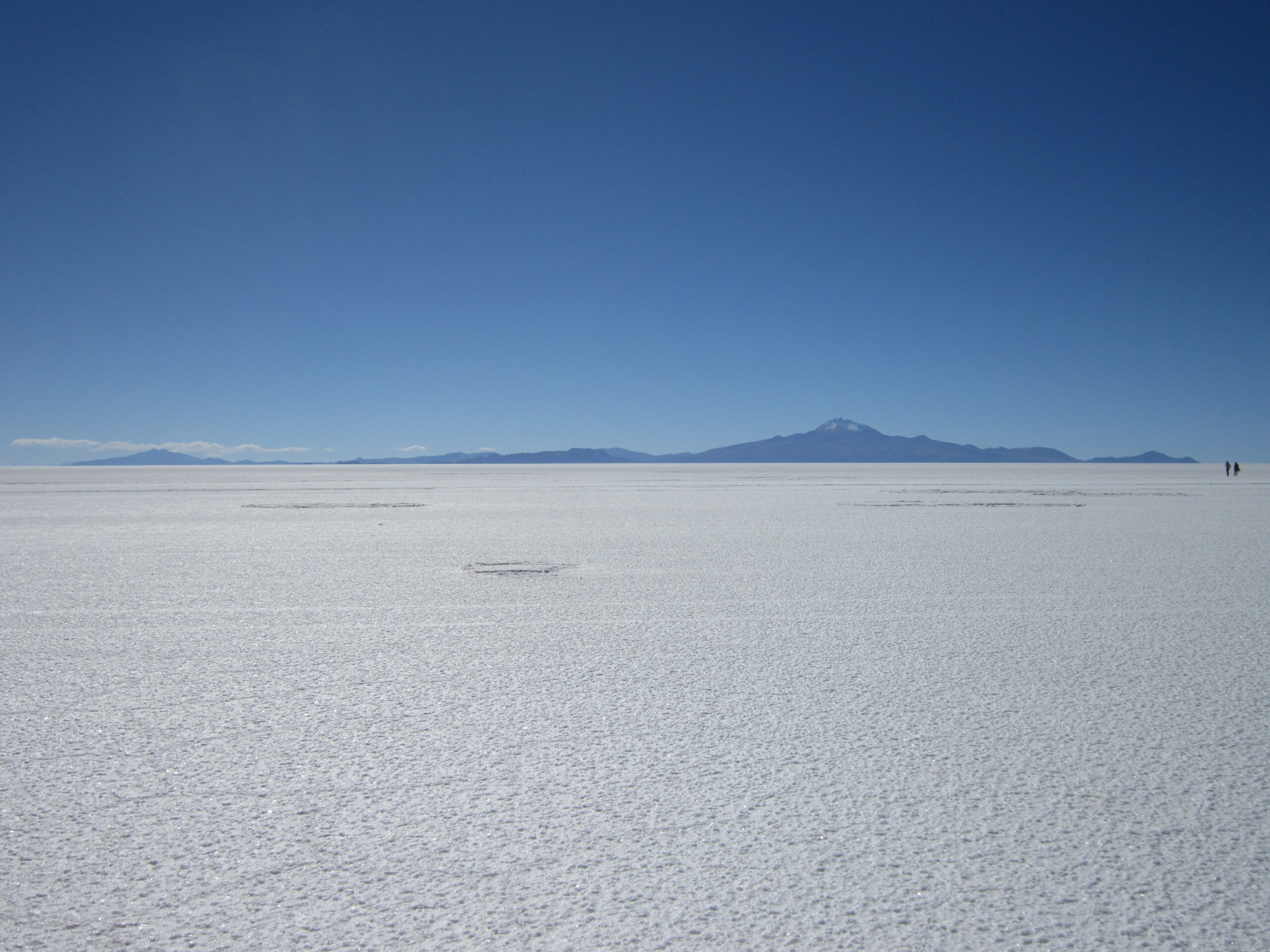

One response to “Bukhara – Add a Dash of Persian Spice”
The bazaars would be wonderful to visit. I would love to do that. The buildings are certainly impressive. Glad you are having a wonderful time.